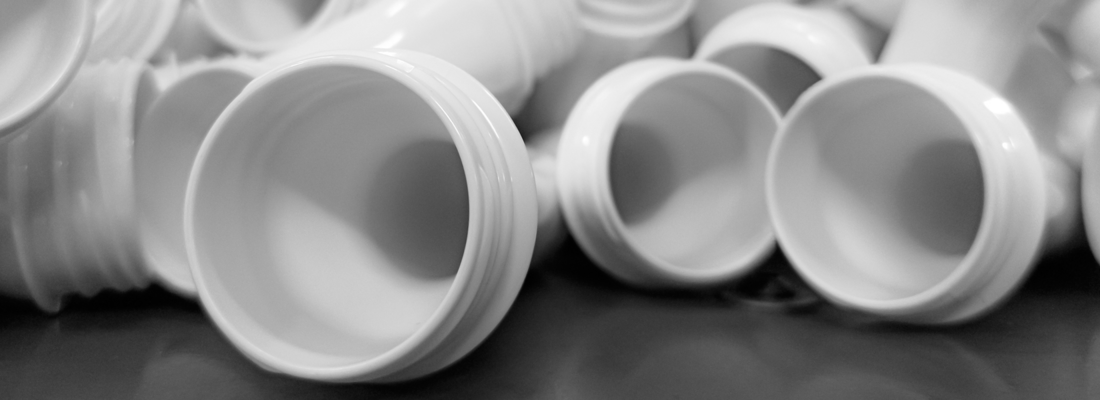

Preform Production
connecting comPETence - issue THREE:23 - Entrepreneurship - especially in the early days - is characterized by will, ability and confidence in one’s own abilities. It requires creativity, assertiveness and staying power.
Recently, we arranged a joint meeting with both companies and met at RAWOPLAST in Kretschau. Our discussion partners were Wolfgang Bonerath, CEO, Marcus Sorge, Operations Manager (both RAWOPLAST), Beda Grob, Chief Technical Officer and Reto Bamert, Sales Director (both Otto Systems).
A meeting with Wolfgang Bonerath, CEO, Marcus Sorge, Operations Manager (both RAWOPLAST), Beda Grob, CTO and Reto Bamert, Sales Director (both Otto Systems)
Entrepreneurship - especially in the early days - is characterized by will, ability and confidence in one’s own abilities. It requires creativity, assertiveness and staying power.
Recently, we arranged a joint meeting with both companies and met at RAWOPLAST in Kretschau. Our discussion partners were Wolfgang Bonerath, CEO, Marcus Sorge, Operations Manager (both RAWOPLAST), Beda Grob, Chief Technical Officer and Reto Bamert, Sales Director (both Otto Systems).

The typically Rhineland openness and cheerfulness of Wolfgang Bonerath, whom I have known for almost 30 years, quickly brings us - after a look back at the “good old days” and our respective beginnings in the PET business - to the current challenges of the PET packaging industry and on how you can survive in this market, consolidate and further expand your market position as a - still - small company.
RAWOPLAST GmbH was founded in 2009 by Wolfgang Rasztovits and his wife Jeanette in Kretzschau, SaxonyAnhalt, Germany. He: expert in preform technology. She: specialist in filling technology. The time until the end of 2010 was used for planning the preform production facility to be built.
“In 2011, the first all-electric Husky injection molding machine was installed, built in Japan by Toyo for Husky,” says Marcus Sorge, RAWOPLAST operations manager, describing the early days of RAWOPLAST. The second and third all-electric machines were quickly added. Investments were made again in 2018, this time in a production line from Otto Systems, “at the request of owner Rastowitz in the RAWOPLAST corporate colors,” adds Sorge. When Rasztovits passed away in 2019, his wife took the helm and sought support to keep the company going.
This is how Wolfgang Bonerath came into play. At that time, Jeanette Rasztovits was well-connected in the beverage industry. But her husband had been in charge of the preform business regarding sales and technology - and thus RAWOPLAST’s core business. She was now looking for support, appropriate expertise and technical knowledge. Bonerath: “We knew each other, and when Mrs. Rastowitz contacted me to talk about continuing the company, I quickly said, OK, I’m in. In addition, we involved Hans Peter Logo from Logo Plastic AG in Switzerland, which is now part of the Semadeni Plastics Group, as a private investor and another silent partner.”
Bonerath has known the PET preform business in Europe, especially for the food sector, for years, also thanks to his time as managing director in a German company producing preforms and bottles. His expertise and, last but not least, the investments were constructive and forward-looking for RAWOPLAST.
“RAWOPLAST’s business development is excellent,” emphasizes Bonerath. “We joined as an investor team about two years ago, only restructured a little here and there and continued to rely on the local staff.” Bonerath reports on the sales development - which is impressive: “While it was €8.2 million in 2021, we were able to achieve €11.2 million in 2022 and expect to close the current financial year with sales of around €16 million.
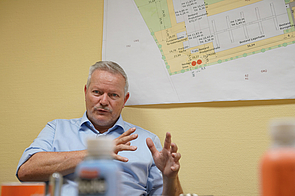

Doubling sales in three years – that’s something to be proud of. “We deliver over 100 million preforms to a retail chain, but we are now also setting up our customer portfolio on a much broader strategic basis than at the beginning of Rawoplast.”
Over time, RAWOPLAST has steadily expanded its production capacity - with an operating area of 13,500 square meters today. RAWOPLAST is known today as a reliable, flexible supplier of preforms for various requirements, mainly in the food industry. So preforms with 28 mm necks for the mineral water market are produced, but also 41 mm 2-start necks for detergents, still in small quantities.
Bonerath: “Four to five years ago, RAWOPLAST delivered 70-80% of production to just one trading partner. This share is now 26%. It’s important to me that we have a broad base.”
The positive company development gives Bonerath and his team scope for developments and ideas, which we provide an outlook on below.
RAWOPLAST today mainly produces PET preforms with a 38-neck neck, primarily for dairy products. “Multilayer preforms are mainly used for these products,” says Bonerath. “We have developed an alternative for the UHT white multilayer that is based on a monolayer structure with titanium dioxide and a specific scavenger. We removed the black layer.” The formulation, registered for patent approval, is closely linked to the process capability in injection and blow molding. “There is real knowhow in there. The scavenger comes from the USA and, as far as I know, we are the only ones in Europe who use it.”
“With our concept, we guarantee a shelf life of twelve months, with around 30% lower costs for the customer,” adds operations manager Sorge. “The main advantage lies in another customeroriented benefit: activation of the scavenger only begins when the bottle is filled and not, as usual, at the time of preform production. This means that storage of the preforms is not time-critical.”
This is a strong, customer-oriented plus, and we learn that the concept was already tested a year ago at the Fraunhofer Institute for Process Engineering and Packaging IVV and led to better results than the comparable multilayer preforms.
We see that Bonerath and his team seek out and successfully master the technological challenges to offer sophisticated solutions in niche markets.
rPET processing is, of course, also a must for RAWOPLAST. According to Bonerath, climateneutral packaging and 100% recyclable bottles are one of the biggest challenges. “Almost all of our customers order preforms with rPET content of up to 55%. In line with EU regulations for the coming years, rPET will continue to increase. In our opinion, the rPET market has already turned 180 degrees: The market is currently full of rPET. We could buy from different suppliers every day: South Africa, Australia, Morocco, and even Germany. I expect prices to drop to below €1,300 per ton shortly.”
Aside from PET, we also talk about the two-stage manufacturing process of polyolefin packaging. There are many extrusionblown bottles and containers made of polyolefins in the market, especially for dairy products. Bonerath brings much experience with the difficult process technology with PP material in the two-stage stretch blow molding process - both in injection molding and stretch blow molding.
When we talk about the PET production systems from Otto Systems, our dialogue partners expressed great satisfaction on both sides. RAWOPLAST now operates three PET-Series systems from Otto Systems: one of the first and two of the second generation.
The old salesman’s saying comes to mind: “Sales sells the first machine - technology sells the second.” Read for yourself:
Beda Grob, CTO of Otto Systems: “RAWOPLAST runs systems from the first generation to the latest series versions. The evolution is clearly visible. But the significant increase in performance and improved ease of operation are much more important. However, regardless of the generation, one thing can be said: all our systems at RAWOPLAST produce like Swiss clockwork.”
RAWOPLAST Managing Director Wolfgang Bonerath: “That’s right: All systems run smoothly day and night.”
Reto Bamert, Sales Director Otto Systems: “Otto Hofstetter AG is known to have a firstclass name in the preform business and has decades of know-how. Both complement perfectly with Otto Systems. We are very grateful that we can demonstrate the performance of our systems under production conditions in this highly professional environment.”
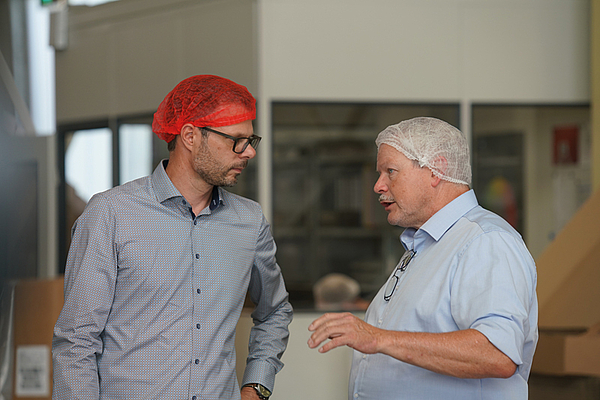
In the medium term, RAWOPLAST intends to replace one of the H-PET machines with another PET-Series production system from Otto Systems. In addition, the company wants to expand its capacity: the plan is to double the storage space with a new hall. The production hall is currently fully equipped with six machines. However, there is the possibility of expanding by two production areas. Then eight lines would be in use.
Win-win: Here in Kretschau, the system partner and the customer form a team - that becomes clearer every minute. Bamert: “We would be happy to equip the new area with more premium systems from Uznach.” And Bonerath doesn’t seem to mind. “The current focus on niche markets is a real win-win situation for us and Otto Systems.”
Bamert points out that both companies, based on their market strategies, focus on healthy growth and develop adequate technologies and products for these markets. This includes the strategy of focusing on special applications outside of the mass market. “That doesn’t mean that projects in these markets cannot be served,” adds Bonerath from RAWOPLAST’s perspective.
One application that both companies are focusing on is long and heavy preforms for containers of 5, 10 and more liters. In many areas of Europe, but also in other regions where the water quality is insufficient for consumption, these large containers have a corresponding market.
Regardless of markets and applications, Otto Systems’ philosophy is to promote the circular economy. To this end, the Swiss company develops a concept and enters into partnerships around the globe.
In order to supply its customers, such as Sonnenländer and Kohrener Landmolkerei, both in the direct production environment of RAWOPLAST, on time and flexibly - for example if preform requirements have to be met quickly even on weekends - RAWOPLAST operates its own logistics/shipping company.
On the production side, PET material is currently delivered via big packs. Two 140 m3 outdoor silos will be added at the end of the year to optimize production. “This increases our independence from the big packs and our flexibility,” says Bonerath.
As a concrete optimization goal in connection with the increased production volumes, Bonerath mentions automation in the production processes and here in particular automatic pallet changing and removal.
Regarding energy consumption, systems for energy and air reduction in dryers play an essential role. Material drying in particular has a decisive influence on the preform production process. “When you push these things to the limit, you need an excellent monitoring system so that you don’t end up with quality problems with the preform. Here, too, we are well on our way,” says Bonerath, adding, “As operations manager, Marcus takes care of the machinery. He did his training at Kaeser Kompressoren, knows technical challenges inside out and takes care of equipment maintenance himself.”
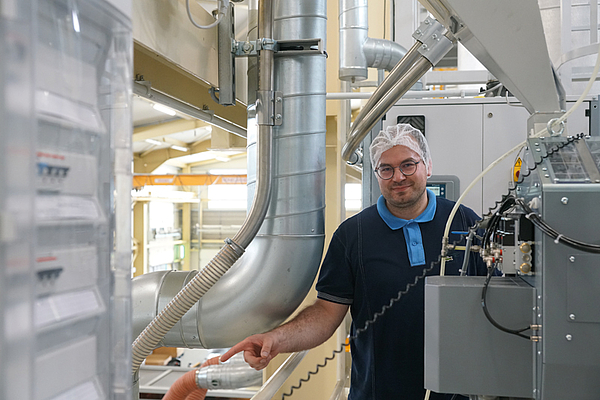
“The decisive factor for choosing the PET-Series from Otto Systems at that time was their service. In retrospect, it has to be said that the system ran excellently from day one and does not cause any problems,” says Sorge. “Furthermore, the accessibility to the machine’s units is excellent.”
And so we arrive in our conversation at the developments and optimizations of the PET-Series from Otto Systems. Thanks to the close mutual exchange between Marcus Sorge, the operations manager at RAWOPLAST, and the technical team led by Beda Grob at Otto Systems, the findings from daily operations were continuously incorporated into the further development of the system series. The team of Otto Systems describes one of their company’s strengths: taking up and adapting to customer needs is a matter of course due to short decision-making processes and high flexibility.
In detail, Grob addresses the following optimizations: The developments in mechanical engineering can be seen in the movements of the clamp and the robot. The compactness of the latest generation is striking, as can be seen from the robot, control cabinet and housing. The system was also able to make further gains thanks to the central feed of the consumables. In addition, it was possible to further increase productivity performance by optimizing the cooling system. According to Grob, the simplified, intuitive menu navigation on the large touch screen, which makes the system extremely user-friendly, is now a key feature of the PET-series.
Grob: “Our production system has reached a level of balance and consistency that enables us to offer it in series production with confidence..” Bamert: “That means we have an extremely competitive system and can devote ourselves fully to the strategic further development of our system portfolio.”

In line with the company’s strategy, the new developments are aimed at applications that cover customer needs for which economically and technologically convincing solutions are lacking in the market. Now that the area of small systems has been covered, a system that meets the requirements for large-volume containers will be available before the turn of the year. Contrary to the high throughput typical in the mass market, melt preparation involves large shot weights. A further challenge in this context is the realization of the large tool opening strokes without compromising the typically compact design of the systems. “Implementing such applications on a 160-ton system is, as far as I know, unique on the market,” adds Grob. According to Bamert, the next step aims to offer Otto Hofstetter AG’s customers a sustainable solution for their existing and sometimes extensive tool stocks. He does not reveal any details about this development, but points out that he wants to pursue the path consistently. “We will expand our product portfolio as planned,” says Grob, “step by step.”
_______________
In our conversation it quickly becomes clear: step by step does not mean that things move forward at a leisurely pace, as the Swiss are often said to do. “The high level of commitment in development,” emphasizes Grob, “is only possible because the systems delivered to our customers produce smoothly. This means we can concentrate our energies entirely on implementing our plans.
“We can benefit from the know-how of Otto Hofstetter AG in many areas: central areas such as IT, EPR system, human resources management and finance - which absorb a lot of energy in other companies - are shared and free up valuable resources for the core business”, said Bamert. “Additionally, we have many employees who have known the international preform business for many years.”
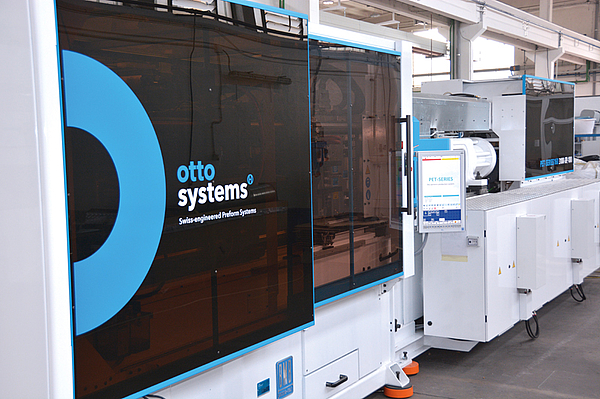
At the end of our conversation, Bonerath once again demonstrated his entrepreneurial drive: “We are about to launch a new product: a liquid food product produced by our new company RAWOFOOD and packaged in innovative PET bottles from RAWOPLAST.” Initially, the product will be sold exclusively to one of the largest German trading companies. Then the further rollout will follow.

It is important to Bonerath that everything runs under one roof and concludes his exciting outlook on the new line of business: “We do everything ourselves, from the recipe of the product, the bottling by our partner, to the marketing that even reaches into the influencer scene.”
Yes, there is a lot going on at RAWOPLAST and Otto Systems. At the latest when in 2024 RAWOPLAST will have expanded their capacity to eight equipped production cells, most certainly in collaboration with Otto Systems, we will be back.
The comPETence center provides your organisation with a dynamic, cost effective way to promote your products and services.

Find our premium articles, interviews, reports and more
in 3 issues in 2025.
